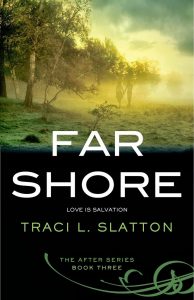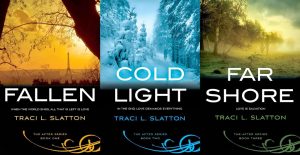When I was 15, I developed asthma. This was not as much fun as it sounds. The cramping in my chest, the inability to get air in, the creeping suffocation–it was terrifying.
My mother took me to a doctor who prescribed a drug called Quibron. I think that’s the way it was spelled. I took the medication and hated it. It made my insides race. I endured a jagged, speeded-up, jittery sensation that made me quiver with discomfort.
I did not want to take the medication. But I knew that if I had asthma, I had to take it. So I made an executive decision: No more asthma.
My body listened. The asthma vanished.
This event changed me. It was a profound lesson in the power of the mind-body connection, a lesson which stayed with me.
After graduate school, I started meditating. In meditation, I experienced some of the phenomena that meditators throughout the millennia have experienced and that many, many sages, Patanjali among them, have described. In a spirit of inquiry, I began to research numinous phenomena. Inevitably, the issue of healing and the mind-body connection arose.
It was John Pierrakos’ seminal book CORE ENERGETICS: Developing the Capacity to Love and Heal that made the first radical impact. Pierrakos was a medical doctor and a student of Wilhelm Reich. He had the educational and intellectual heft to convince my Yale- and Columbia-trained brain that what I saw and felt was seen and felt by other people, too. That what I perceived was real and could be useful.
Unfortunately, there are a lot of flakes in the “New Age” who have the intellectual grounding of a doorknob. They do nothing to validate and clarify the body of work that has arisen through the ages.
But Dr. Pierrakos and his mentor and colleague Wilhelm Reich were serious academics. Pierrakos earned my respect from the opening of CORE ENERGETICS:
Three main theses are woven together in the therapeutic approach that I am developing, which I call core energetics. The first is that the human person is a psychosomatic unity. The second is that the source of healing lies within the self, not with an outside agency, whether a physician, God, or the powers of the cosmos. The third is that all of existence forms a unity that moves toward creative evolution, both of the whole and of the countless components.
This opening to Chapter 1 of his book struck me decades ago when I first read it as it still strikes me today, as one of the most remarkable and succinct depictions of the existential human condition ever written.
Research into Wilhelm Reich, Pierrakos’ teacher, convinced me that Reich was on to something real and valid, too. He was right: The way energy moves through the body has everything to do with the indivisible psychological and physical health of the person. The healthy human organism does have a healthy orgasm. He was talking about sex, and he advocated the female orgasm, so what can be expected except the the US government would lock him up?
Do we think that a single one of the buttoned-up stuffed shirts who stuck him in prison could properly get a woman off? Better to jail Reich than to consider their own sexual inadequacy.
In my opinion, our current culture still can’t deal with true female sexuality or with actual female orgasm. It’s hip to see “sluttishness” as a kind of a good thing, a rebellious sexy quality. But it still misses the point of a woman owning her sexuality, and coming to orgasm, without being labelled.
The world still isn’t ready for Reich’s work.
But maybe it’s ready for Daskalos. Along my journey of learning everything I can about the mind-body connection and numinous phenomena, I picked up Kyriacos Markides’ book THE MAGUS OF STROVOLOS: The Extraordinary World of a Spiritual Healer.
Daskalos was a healer on Cyprus, and his descriptions of the astral plane, and of elementals, as conveyed through Markides, is quite similar to what I’ve experienced. When I was a healer in practice, Daskalos appeared a few times in my healing room, when I had my hands on a client. His work was miraculous, his instruction sharp and even peremptory, but clear. I found him to be quite the patriarchal Greek man, which is why I think the world may be almost ready to hear his words. Patriarchy clings to itself.
Daskalos came in his spirit form, because he had passed over. I do wonder about openly admitting that since I’ve stopped copping to what I actually perceive in the world.
Markides’ book quotes Daskalos as saying, “All illnesses are the result of psychonoetic conditions” and “the state of our health is after all the product of our thoughts and emotions,” a statement my own life and work has seen to be true, with the caveat that it all plays out against a larger background of karma, and karma is almost always partly obscured from us. Daskalos too talks about karma.
What it boils down to, for me, is that illness and health are psychosomatic. This doesn’t mean that it’s imaginary, it means that it roots itself in the mind, specifically, in a dynamic field of mind-body-karma. It also doesn’t mean that illness or health can necessarily be willed, though we’ve all seen people who have willed a disease into existence, and I got lucky when I dispensed with asthma. It does mean that we can examine our thoughts, feelings, and past actions carefully when we get sick, and wonder what we can rectify without judgment, and how we can return to love and peace.










